 In Athens, Paul was disturbed by the culture around him. (Acts 17:16). But instead of coming against it, he used things from that culture to present the gospel. (Acts 17:22-31).
In Athens, Paul was disturbed by the culture around him. (Acts 17:16). But instead of coming against it, he used things from that culture to present the gospel. (Acts 17:22-31).
Materials
1. A pumpkin (instructions for preparing it are below)
2. A candle or flashlight to go inside the pumpkin
3. Lighter or matches if you are using a candle
4. A large knife (not sharp, it is for effect).
5. Some mud or clay dirt
6. A damp cloth
7. A cloth large enough to cover the pumpkin
Preparation
1. Cutting carefully so that you can set it back in place, cut the top from the pumpkin.
2. Scoop out the seeds and inner membrane. Rinse, dry and save it. You may want to soak them in coffee or something similar to turn them dark. We will be returning them to the pumpkin.
3. Making sure to keep the cuttings on one side of the pumpkin only, cut a design into the pumpkin. You can use a traditional jack-o-lantern or some other design. Carving ‘JESUS’ into the pumpkin or carving a candle is effective. Be careful not to carry the design to the sides or back of the pumpkin as you do not want to show the cuts at the beginning of the lesson.
4. Put the seeds and membrane back into the pumpkin. If it is going to be over a few hours before the lesson, it would be better to put the seeds and membrane in the refrigerator until closer time.
Just before the session
1. Set the pumpkin in front of you so that the carved part is toward your body. You do not want the audience to see that it has been carved.
2. If the seeds were refrigerated, return them to the pumpkin.
3. Put the top on the pumpkin matching it as good as possible so that the cut is not too obvious.
4. Smear a little clay or mud on the front of the pumpkin so that the audience can easily see it.
5. Set the other supplies (knife, light, damp cloth) where you can reach them.
6. Cover the pumpkin with a cloth so that it is not visible from any side when your group comes in.
7. PRAY
The Lesson
Sometimes people ask what it is like being a Christian.
I’d like to tell you that it is all fun and easy.
But I’m a Christian.
I’m supposed to tell the whole truth.
And here it is.
It is fun to be a Christian because I am God’s child and God loves me. And it is never too hard for me because God helps me.
But sometimes it is pretty hard to be a Christian.
(Lift the cloth off of the pumpkin)
I think I can use this pumpkin to help explain.
We all start out like pumpkins.
We’re out in the garden along with all the others.
God is always walking through that garden asking if any of us what to belong to Him.
When we say ‘yes’ to God, he picks us up out of the garden.
(Use damp cloth to clean the dirt off the pumpkin.)
And he gently washes away the dirt.
That feels really, really nice.
(Pick up the knife)
But there is more to be done.
You see, dirt was not the only thing we brought with us from the garden.
(Pretend to cut around the top of the pumpkin)
Some of what we brought back requires surgery and that can hurt.
(Lift off the top.)
While we were out there in the garden, some things grew inside us.
(Take out a few seeds and hold them out to be seen.)
Sometimes the others were not fair to us.
(Take out more of the seeds)
We became angry and the seed of bitterness started to grow inside.
(Continue to take out seeds as you talk)
Sometimes others let us down or hurt our feelings.
We began to feel sorry for ourselves.
And the seeds of rejection started to grow.
We try to get even with those who hurt us.
The seeds of unforgiveness and violence begin to grow inside.
(Remove the last of the seeds)
Yes, all of this cleaning up hurts a bit.
But if we won’t let God clean all of this out, it gets infected.
And then we really have problems.
Christians who won’t let God clean out all the junk from the pumpkin patch are really miserable.
They have spiritual infections and they can spread them to others.
(Wipe the inside with the cloth)
(Pretend to make a few cuts with the knife on your side of the pumpkin)
I’m learning to hold really still and let God take care of anything that needs cleaning!
Sure it hurts sometimes.
Put the light inside the pumpkin and light it
And sometimes I wonder what God is trying to do!
(Turn the pumpkin around for the group to see)
Then God reminds me that He has a wonderful plan for my life.
He wants the beauty of Jesus to shine through me so others can see the way to Jesus.
That’s what we are, you know.
We are not really better than those poor pumpkins who are still in the garden.
We are just a whole lot better off because Jesus has taken us out of the darkness and into His wonderful light.
(Lights off)
Jesus said, “You are the light of the world.
A city on a hill can’t be hidden.
Also, people do not light a lamp and put it under a bowl.
Instead, they put it on its stand.
Then it gives light to everyone in the house.
In the same way, let your light shine in front of others.
Then they will see the good things you do.
And they will praise your Father who is in heaven.*
Please pray with me.
Father God, thank You for asking us to be Your children.
Father, we want to be more like Jesus.
We want others to see Your light shining in our lives.
Help us to open our hearts to You.
Take away all our bad attitudes.
Give us Your light and love inside.
We’re asking this in Jesus’ Name. Amen
Source: http://www.beau.org/~vickir/halloween/
Looking for some icebreakers for your party or event? My eBook, “IceBreakers Ahead: Take It to the Next Level” found at http://www.creativeicebreakers.com
not only provides 52 of the most world’s popular group icebreaker activities, but also includes life changing lesson ideas and questions to smoothly transition into discussions about issues common to most groups.

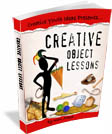
MORE IDEAS? See “Creative Object Lessons”
200 page e-book that explains everything you need to know when planning your very own object lessons. It contains 90 fully developed object lesson ideas and another 200 object lesson starter ideas based on Biblical idioms and Names / Descriptions of God.
Learn More…

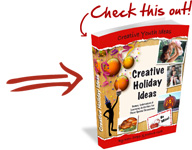 Holiday Collection
Holiday Collection
Games and Activities in Celebration of common Holidays.
Creative Holiday Ideas has over 300 pages of ideas to help you plan your next New Year’s Day, Valentine’s Day, Mother’s Day, Father’s Day, Halloween or Fall Festival, and Thanksgiving event. If you’ve ever wondered what you’re going to do for all these holidays and how you’re going to do it, this resource is for you.
=> Tell me more about the Holiday Collection




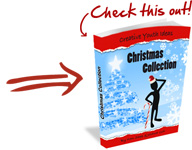
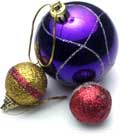 What do sand, trees, money, pearls, wheat, and mustard seeds have in common? Jesus used them all as tangible symbols or object lessons to help his disciples to understand and remember intangible truths. The Master Communicator often attached deeper meanings to common things and objects.
What do sand, trees, money, pearls, wheat, and mustard seeds have in common? Jesus used them all as tangible symbols or object lessons to help his disciples to understand and remember intangible truths. The Master Communicator often attached deeper meanings to common things and objects.

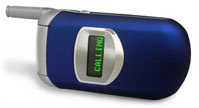 Materials
Materials Materials
Materials
 In Athens, Paul was disturbed by the culture around him. (Acts 17:16). But instead of coming against it, he used things from that culture to present the gospel. (Acts 17:22-31).
In Athens, Paul was disturbed by the culture around him. (Acts 17:16). But instead of coming against it, he used things from that culture to present the gospel. (Acts 17:22-31).